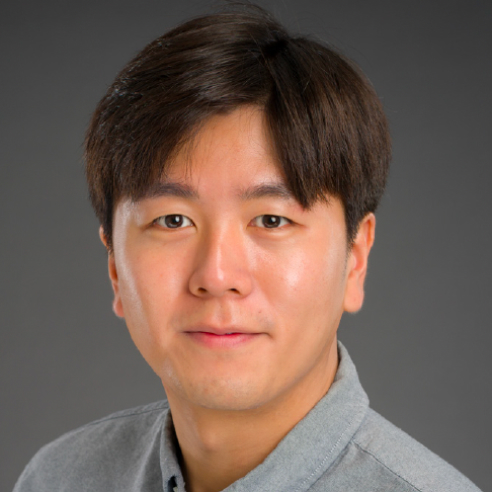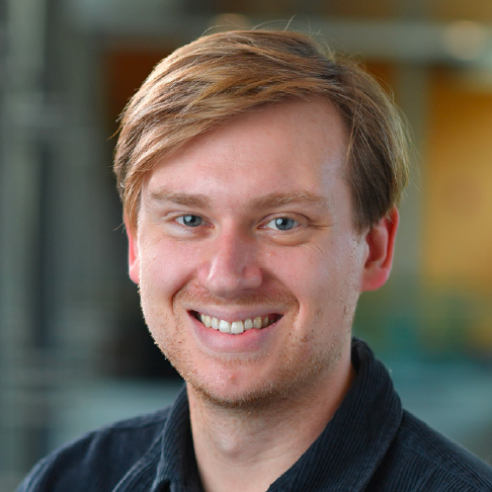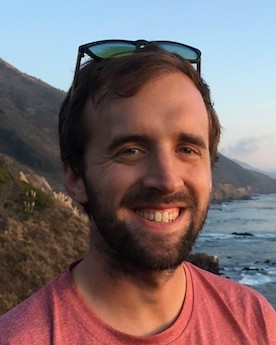

University of California, Berkeley
Appointed in 1993

University of California, San Francisco
Appointed in 1999
Read more
University of California, San Francisco
Appointed in 1999


Harvard University
Appointed in 2022
During mammalian development, coordinated cell differentiation and migration convert a simple neural tube into a brain with more than a hundred anatomical regions and probably more than a thousand cell types. How do these cell types emerge? How do cells migrate to their destined locations? How do cells communicate with each other? These are some fundamental problems in brain development.
As a postdoctoral fellow in Xiaowei Zhuang’s lab at Harvard, I develop new methods to systematically study these problems in mouse brain development. I develop new computational methods to connect cells from MERFISH spatial transcriptomics measurements into trajectories and determine cell-cell communication pathways activated in each cell. The reconstructed trajectories will allow me to comprehensively map the differentiation, maturation, and migration of individual cells. I will identify which cell-cell communication pathways are functionally crucial for generating each cell type. Then I will develop high throughput imaging-based screen methods to validate the discoveries.

Harvard University /
Massachusetts Institute of Technology
Appointed in 1991
Read more
Harvard University / Massachusetts Institute of Technology
Appointed in 1991


Yale University
Appointed in 1994


Stanford University
Appointed in 1968


Johns Hopkins University
Appointed in 2004


Brandeis University
Appointed in 1996

University of California, San Francisco
Appointed in 2000
Read more
University of California, San Francisco
Appointed in 2000


Rockefeller University
Appointed in 2013
My current research focus is on understanding molecular mechanisms of CLC proteins, ubiquitous membrane proteins that transport chloride ions across membranes. The CLC proteins are involved in various biological processes including regulation of membrane potential, electrolyte/fluid transport across epithelia, and control of intravesicular pH. Mutations in CLC genes cause many hereditary disorders in humans. An interesting aspect of the CLC family is that a common structural architecture seems to be used for both active and passive ion transport. Some CLCs are chloride channels, which provide a passive pore for chloride ion conduction, whereas others function as secondary active transporters that exchange two chloride ions for one proton. Despite recent advances in our understanding of their mechanisms, fundamental questions remain unanswered, especially regarding how exactly CLC transporters couple the transfer of chloride and proton ions and what leads to the mechanistic difference between the channels and transporters. In the MacKinnon lab, I use structural and functional approaches to address these questions.

University of California, Berkeley
Appointed in 2024
Read more
University of California, Berkeley
Appointed in 2024
CRISPR-Cas systems have revolutionized genetic engineering and led to novel genetic medicines. As powerful as these systems are, they have some disadvantages such as their large size and a lack of orientation bias which limits their therapeutic usage. CRISPR-associated transposons (CASTs) are mobile genetic elements that use CRISPR-Cas systems for RNA-guided transposition. CASTs may represent the next generation of genome editors due to their enhanced features relative to CRISPR-Cas. Yet, CASTs still require further optimization to realize this potential.
Dr. Jung-Un Park will engineer novel forms of CASTs to optimize properties for genome editing in Dr. David Savage’s lab at the University of California, Berkeley. Using structural biology, biochemistry, and protein engineering approaches, Dr. Park will enhance the activity of individual CAST proteins, as well as tune the functional association between different CAST proteins. Ultimately, Park’s research will provide vast insight into genome editing and may result in the next generation of gene editing technologies.
Park’s interest in CAST biology stems from his graduate work in Dr. Elizabeth Kellogg’s lab at Cornell University. There, he solved structures for CAST that informed on both RNA-guided and RNA-independent transposition. Park will leverage his extensive knowledge of CAST structural details to optimize this system for genome editing during his postdoctoral work.

Massachusetts Institute of Technology /
National Institutes of Health
Appointed in 1978
Read more
Massachusetts Institute of Technology / National Institutes of Health
Appointed in 1978


University of Chicago
Appointed in 1990

University of California, Los Angeles
Appointed in 2012
Read more
University of California, Los Angeles
Appointed in 2012

University of California, San Francisco
Appointed in 1971
Read more
University of California, San Francisco
Appointed in 1971

MRC Center, University Medical School, England
Appointed in 1977
Read more
MRC Center, University Medical School, England
Appointed in 1977

University of California, Berkeley
Appointed in 1982
Read more
University of California, Berkeley
Appointed in 1982


Stanford University
Appointed in 1981

University of California, Los Angeles
Appointed in 2006
Read more
University of California, Los Angeles
Appointed in 2006

University of Utah School of Medicine
Appointed in 2005
Read more
University of Utah School of Medicine
Appointed in 2005

University of Wisconsin, Madison
Appointed in 1971
Read more
University of Wisconsin, Madison
Appointed in 1971

University of Amsterdam, Netherlands
Appointed in 1960
Read more
University of Amsterdam, Netherlands
Appointed in 1960


Harvard University Medical School
Appointed in 2000


Stanford University
Appointed in 2006

University of California, San Francisco
Appointed in 2012
Read more
University of California, San Francisco
Appointed in 2012

Harvard University Medical School
Appointed in 1973
Read more
Harvard University Medical School
Appointed in 1973

University of California, San Francisco
Appointed in 1997
Read more
University of California, San Francisco
Appointed in 1997


Washington State University
Appointed in 1999

University of California, San Francisco
Appointed in 1988
Read more
University of California, San Francisco
Appointed in 1988


Harvard University
Appointed in 2008


Harvard University
Appointed in 2010

National Institute for Medical Research, England
Appointed in 1973
Read more
National Institute for Medical Research, England
Appointed in 1973

Whitehead Institute for Biomedical Research
Appointed in 1992
Read more
Whitehead Institute for Biomedical Research
Appointed in 1992

California Institute of Technology
Appointed in 1999
Read more
California Institute of Technology
Appointed in 1999


Harvard Medical School
Appointed in 2024
In adaptive behavior, we take in information from the world around us and use that information to execute certain actions to interact with the surrounding environment. For example, successful navigation requires us to remember the spatial position of a goal and transform that information into actions that will move us towards that goal. Mechanistically, it is still unclear how neural circuits perform these computations.
Dr. Noah Pettit will approach this question using fruit fly interaction with wind direction in Dr. Rachel Wilson’s lab at Harvard Medical School. Dr. Pettit hypothesizes that specific cell types form a circuit that encodes wind direction, maintains it in memory, and transforms this information to influence body movement. Pettit will use multisensory virtual reality, two-photon imaging, and genetic silencing approaches to investigate this circuit at the cellular and molecular levels. These studies will provide a detailed description of how environmental perception is sensed, stored, and translated into action, thereby providing a general framework for understanding these computations in different systems and organisms.
Pettit generated expertise in the underlying neurobiology of spatial learning in Dr. Christopher Harvey’s lab at Harvard Medical School. During his graduate studies, he examined the role of Fos, a transcription factor implicated in memory and spatial learning. Pettit discovered that Fos-induced neurons are more likely to be place cells – cells that are activated when an animal experiences a certain place in its environment. Additionally, Pettit found that the place code degrades when mice voluntarily disengage from a spatial task, suggesting that the internal state exerts a strong influence on place cell activity. With this experience, Pettit will now transition to fruit flies and understanding how these animals transform and respond to external cues.

University of California, Berkeley
Appointed in 2001
Read more
University of California, Berkeley
Appointed in 2001

University of Wisconsin, Madison
Appointed in 1966
Read more
University of Wisconsin, Madison
Appointed in 1966

University of California, San Francisco
Appointed in 1996
Read more
University of California, San Francisco
Appointed in 1996

Karolinska Institutet, Stockholm
Appointed in 1971
Read more
Karolinska Institutet, Stockholm
Appointed in 1971


Yale University
Appointed in 2008
Current research: I am investigating the causes of differences in lifespan between individuals, using the nematode work Caenorhabditis elegans as a model organism.
My overall scientific interest is in the control of noise in biological systems: how do organisms buffer themselves from, or exploit, stochastic events? How do individuals in a population begin to diverge from one another, and what are the consequences?
After growing up in Montana and majoring in biological sciences at Stanford University, I did my PhD training in the lab of Dr. Julie Theriot at Stanford, studying shape variability in populations of bacteria and epithelial cells. This work allowed us to devise qualitative and quantitative models of how the biochemistry of the actin cytoskeleton influences the large-scale geometry of moving cells. I am now with the lab of Dr. Frank Slack at Yale. And to the extent that postdocs permit themselves to venture outside the lab, I like to spend my time hiking and cycling.

Memorial Sloan-Kettering Cancer Center
Appointed in 1994
Read more
Memorial Sloan-Kettering Cancer Center
Appointed in 1994

University of California, Berkeley
Appointed in 2023
Read more
University of California, Berkeley
Appointed in 2023
As we learn new behaviors, we still have to remember old behaviors as well. Thus there is a tension between the flexibility in learning and the stability of maintaining behaviors. Dr. Mark Plitt proposes that neural circuits resolve this tension by using neuromodulation to adaptively switch between stable and labile states. He will investigate these questions in Dr. Yvette Fisher’s lab at the University of California, Berkeley. There, Dr. Plitt will use a fly’s head direction circuit – a neuronal representation of the fly’s orientation in space – to investigate the tradeoffs between flexibility and stability. Dr. Plitt predicts that different neurotransmitters will reinforce learning and maintenance of memory. By developing this powerful model system, Dr. Plitt hopes to uncover physiological and computational principles that govern flexible learning.
As a graduate student in Dr. Lisa Giocomo’s lab at Stanford University, Plitt investigated hippocampal “place” cell remapping – a cellular process that encodes an animal’s memory-guided navigation. Specifically, Dr. Plitt demonstrated that hippocampal remapping patterns are predictably driven by an animal’s prior experience. This expertise in memory establishment will assist Dr. Plitt in investigating the tradeoff between stability and flexibility during adaptive learning.

Harvard University Medical School
Appointed in 2013
Read more
Harvard University Medical School
Appointed in 2013
I am interested in the mechanisms that guide proteins to assemble into mesoscale structures, from force-generating cytoskeletal polymers to metabolic microcompartments. While the basic principles underlying these systems underpin much of biological organization, I focus on tractable polymers found in bacteria. For example, as a graduate student in Dyche Mullins’ lab at UCSF, I reconstituted a three-component bacterial plasmid-segregating actin system in vitro and elucidated the multiple regulatory functions of its single accessory protein. As a postdoc, I have investigated the assembly of the carboxysome, a protein organelle in cyanobacteria that we found grows like a crystal until it is rapidly coated by a layer of shell proteins. Currently, I am interested in a long-range protrusive apparatus actuated by chemical changes.
I hope that a thorough understanding of these machines can permit the rational design of self-assembling structures suited for use in nanotechnology, metabolic engineering, and drug delivery.


Columbia University
Appointed in 2019


University of Oregon
Appointed in 1991


Princeton University
Appointed in 1973

Harvard University Medical School
Appointed in 1997
Read more
Harvard University Medical School
Appointed in 1997

University of Illinois at Urbana-Champaign
Appointed in 2004
Read more
University of Illinois at Urbana-Champaign
Appointed in 2004


Wistar Institute
Appointed in 1965

Carnegie Mellon University /
University of Rochester
Appointed in 1977
Read more
Carnegie Mellon University / University of Rochester
Appointed in 1977


University College, England
Appointed in 1978